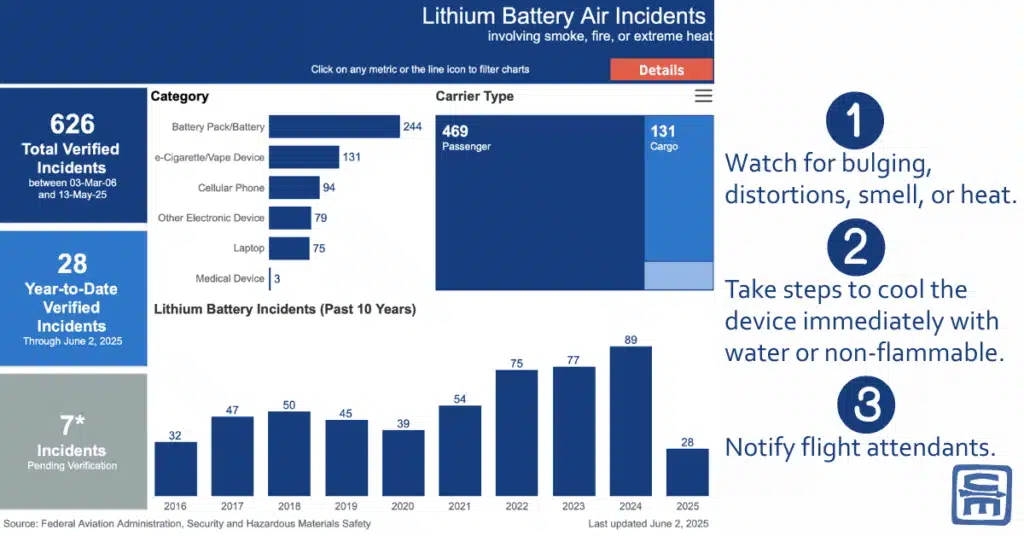
Flight Safety Alert: Lithium Battery Fires Are on the Rise
- Posted by Mike Shertz MD/18D
- Categories Air Travel Emergencies
Lithium-ion batteries are ubiquitous in personal electronic devices and now causing fires.
Researched and written by Mike Shertz, MD/18D, not AI
Since 2006, 626 events involving smoke, fire, or extreme heat in aircraft cabins from those batteries have occurred.
🕖 Reading Time, 2 minutes
Fires in personal devices with lithium batteries is currently the most common cause of in-flight fires. Each year, the frequency of these events increases.
Once the batteries begin to overheat, they can go into thermal runaway, where one battery burns and ignites the neighboring battery, resulting in overheating and serial burning.
To prevent the overheating batteries from fully catching fire and to stop the sequence, they need to be immediately cooled with water or any nonflammable liquid (no, your mini-bar liquor bottle will not work for this purpose). Fully submerging the device in liquid allows the liquid to get inside the device and to the battery, thereby hopefully cooling the device.
On a plane, notify the flight attendants immediately, and they will take it from there.
Dr. Mike Shertz is the Owner and Lead Instructor at Crisis Medicine. Dr. Shertz is a dual-boarded Emergency Medicine and EMS physician, having spent over 30 years gaining the experience and insight to create and provide his comprehensive, science-informed, training to better prepare everyday citizens, law enforcement, EMS, and the military to manage casualties and wounded in high-risk environments. Drawing on his prior experience as an Army Special Forces medic (18D), two decades as an armed, embedded tactical medic on a regional SWAT team, and as a Fire Service and EMS medical director.
Using a combination of current and historical events, Dr. Shertz’s lectures include relevant, illustrative photos, as well as hands-on demonstrations to demystify the how, why, when to use each emergency medical procedure you need to become a Force Multiplier for Good.




